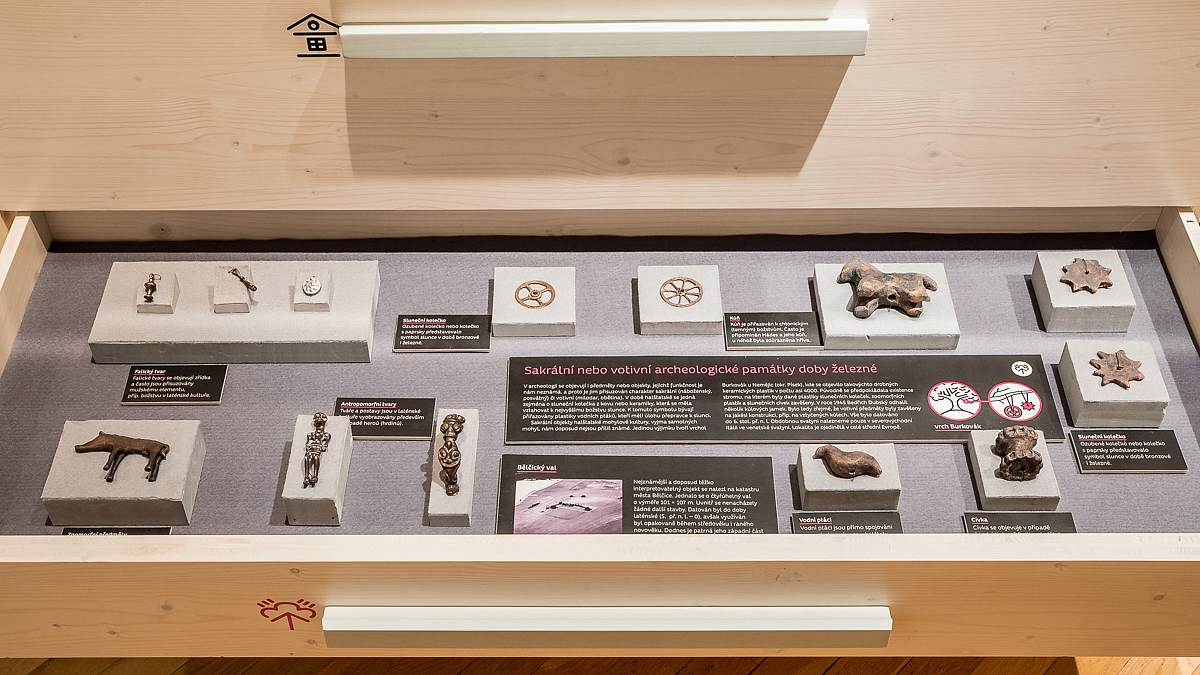SECULAR AND SACRED BUILDINGS
During the Iron Age, it was common to construct permanent buildings that would be used for housing, manufacturing or ritual purposes. The dwelling houses had a pole-based structure and their walls were covered with clay and plastered. The roof was covered with reed. Smaller houses served for one family, for example the houses from Bezdědovice. The Celtic settlements also featured larger houses, which probably served as gathering sites or as palaces for the elite. Among the findings made in these settlements are other non-residential buildings such as furnaces, storage pits, fences and clay pits.
A specific role was played by sacred buildings such as mounds and shrines. An exceptional find of a sanctuary was made on the Burkovák hill near Nemějice (Písek district). More than 4,000 small ceramic sculptures had been found here – sun wheels, sun coils and zoomorphic sculptures of birds and horses. It was assumed that a tree had used to stand on the top and that all the items had been hanging from this tree. However, in 1945, Bedřich Dubský unveiled several stake holes, indicating the existence of a structure or stakes. This unique finding was dated back to the 6th century BC; a similar object can be found only in north-eastern Italy, the so-called Venetian sanctuary.
Another finding was a structure near the village of Záhrobí in the cadastral area of the town of Bělčice, which comes from the La Tène period. It is a quadrilateral wall with an area of 101x107 metres. Inside, signs of a structure in the western corner of the fortification was discovered. While the structure was dated to between the 3rd and 1st centuries BC, it would be also used during the Middle Ages and early modern times. Until today, it is visible that its western and southern parts are elevated above the field level. The building probably played a power-projecting and symbolic role.

